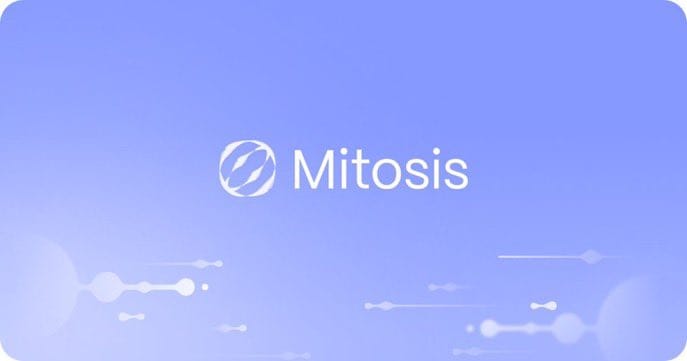MicroStrategy’s Bitcoin Strategy Meets Mitosis’ DeFi Innovation: A Convergence of Corporate and Decentralized Finance

Introduction
MicroStrategy’s transformation into the largest corporate Bitcoin holder, with 555,450 BTC worth $33.1 billion as of May 2025, has redefined corporate treasury management. Meanwhile, Mitosis, a Layer 1 blockchain protocol, is revolutionizing DeFi with its Ecosystem-Owned Liquidity (EOL) model, enabling programmable liquidity through tools like the Matrix Straddle Vault. Recent MitosisOrg posts on X highlight Mitosis’ vision of a “universal liquidity layer” for modular blockchains, offering LPs flexible, high-yield opportunities. What happens when these worlds collide? This article explores how MicroStrategy’s Bitcoin strategy could leverage Mitosis’ DeFi infrastructure, the potential synergies, and their implications for corporate and decentralized finance.
What to expect from this article includes:
➡️ MicroStrategy’s Bitcoin Treasury Play
➡️ Mitosis’ DeFi Liquidity Revolution
➡️ A Potential Convergence
➡️ Market and Investor Implications
➡️ Challenges and Risks
➡️ A New Financial Paradigm
Let’s dive right in 🚀
MicroStrategy’s Bitcoin Treasury Play
Since August 2020, MicroStrategy, led by Executive Chairman Michael Saylor, has pivoted from a business intelligence firm to a Bitcoin-centric treasury company, holding 1.7% of Bitcoin’s supply. Its strategy involves:
▪️Massive Acquisitions: The company spent $33.1 billion at an average price of $66,384 per BTC, funded by $7.2 billion in convertible bonds (0% interest) and equity issuance.
▪️21/21 Plan: A $42 billion capital raise ($21 billion debt, $21 billion equity) aims to boost holdings to 700,000 BTC by 2032.
▪️ Stock Surge: MSTR stock soared 500% in 2024, outpacing Bitcoin’s 123% rise, driven by its role as a leveraged Bitcoin proxy.
This approach has amplified Bitcoin’s price, with purchases like $243 million for 2,530 BTC in January 2025 dwarfing ETF inflows. However, its $100 billion market cap, against $463 million in declining software revenue, reflects speculative fervor and risks like debt and volatility.
Mitosis’ DeFi Liquidity Revolution
Mitosis is tackling DeFi’s liquidity fragmentation with EOL, where LPs govern and optimize assets across chains. Recent MitosisOrg posts emphasize its modular liquidity layer, eliminating intermediaries and enabling “programmable assets”. The Matrix Straddle Vault, launched in its final phase on April 29, 2025, exemplifies this:
🎯Open Access: No deposit caps or eligibility criteria, allowing universal participation with assets like weETH.
🎯 Dual Rewards: LPs earn MITO Points (tied to $MITO governance) and Theo tokens, enhancing yields.
🎯 Cross-Chain Fluidity: Vaults connect chains like Ethereum and Arbitrum, leveraging EigenLayer for security.
With $80 million in TVL in three months and a $7 million seed round from Amber Group, Mitosis is building a scalable, LP-driven ecosystem.
A Potential Convergence
Imagine MicroStrategy, with its vast Bitcoin reserves, engaging Mitosis’ DeFi infrastructure. This synergy could unfold as:
▪️Bitcoin as DeFi Collateral: MicroStrategy could deposit BTC into Matrix Straddle Vaults, receiving maAssets to earn MITO Points and Theo tokens while retaining governance rights. This diversifies yield beyond Bitcoin appreciation, aligning with @MitosisOrg’s vision of flexible liquidity.
▪️Liquidity Amplification: By channeling BTC into Mitosis’ cross-chain vaults, MicroStrategy could enhance DeFi liquidity, supporting new protocols and L2s, as Mitosis aims to unify modular chains.
▪️Corporate-DeFi Bridge: MicroStrategy’s participation would signal corporate trust in DeFi, encouraging firms to explore Mitosis’ EOL model, especially as DeFi’s TVL hits $100 billion in 2025.
Such a move could leverage MicroStrategy’s $33.1 billion BTC to generate DeFi yields, while Mitosis gains credibility from a corporate giant, boosting its TVL and $MITO adoption.
Market and Investor Implications
This convergence could reshape markets and sentiment:
➡️ Bitcoin Price Support: MicroStrategy’s BTC in Mitosis vaults would lock assets, reducing circulating supply and supporting prices, as seen with its 1.7% supply hold.
➡️ MSTR Stock Dynamics: DeFi yields could stabilize MSTR’s 36% NAV premium, countering volatility (300% peak in Q4 2024, -50% in Q2 2022) by diversifying revenue.
➡️ Investor Sentiment: X posts show Bitcoin bulls praising MSTR’s “positive feedback loop”. Mitosis’ community lauds its “liquidity revolution”. A partnership could merge these narratives, attracting institutional and retail investors to both.
Mitosis’ open vault model, as per @MitosisOrg, makes this accessible, while MicroStrategy’s Nasdaq-100 inclusion in December 2024 draws institutional eyes.
Challenges and Risks
The integration faces hurdles:
- Volatility Risk: Bitcoin’s swings could disrupt vault yields, with a 50% drop slashing MicroStrategy’s $31.2 billion holdings to $15.6 billion, impacting MSTR and DeFi positions.
- Smart Contract Security: Mitosis’ vaults, though audited by Ethos, face hack risks, with DeFi losing $1 billion in 2024. MicroStrategy’s BTC scale amplifies exposure.
- Regulatory Scrutiny: MicroStrategy’s debt and Mitosis’ DeFi operations could attract regulators, especially with potential 2025 crypto rules.
Mitosis’ testnet iterations and MicroStrategy’s debt management (no margin calls since 2022) mitigate some risks, but caution is needed.
A New Financial Paradigm
MicroStrategy’s Bitcoin treasury and Mitosis’ DeFi innovation represent bold visions for finance. Combining MicroStrategy’s $33.1 billion BTC with Mitosis’ Matrix Straddle Vault could unlock new yield streams, unify liquidity, and bridge corporate and decentralized worlds. For MicroStrategy, it’s a chance to diversify beyond price speculation. For Mitosis, it’s a step toward mainstream DeFi adoption, as MitosisOrg envisions.
For investors, this convergence offers exposure to Bitcoin’s upside and DeFi’s yield, though with volatility and regulatory risks. As DeFi’s TVL grows and corporate crypto adoption rises, this partnership could redefine finance, merging Saylor’s Bitcoin maximalism with Mitosis’ liquidity revolution in a $100 billion market. The future of finance may lie at this intersection, where corporate conviction meets decentralized potential.
Stay tuned for more update on Mitosis ecosystem by checking out their official pages at: Website | X | Discord | Telegram


Comments ()